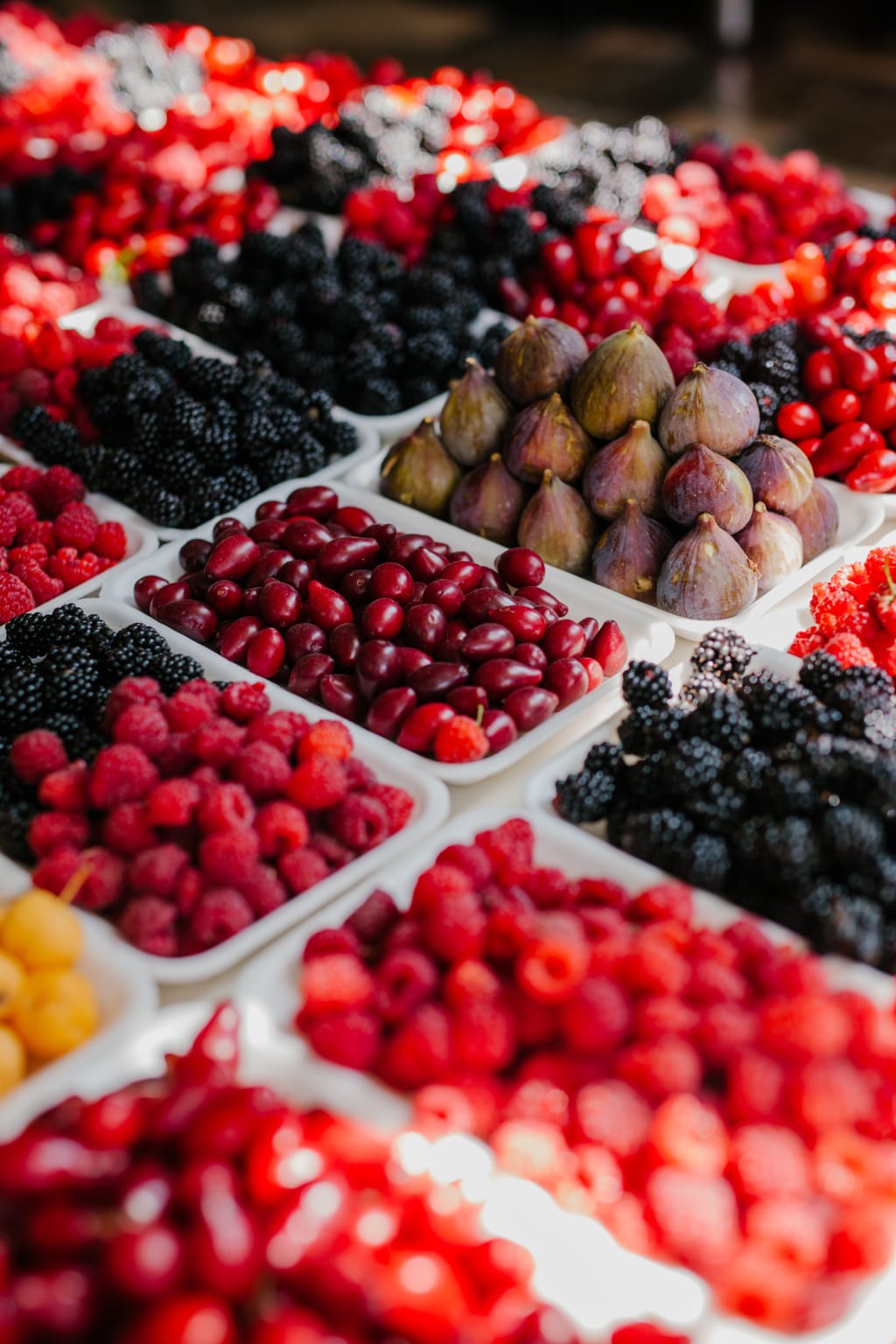How to Avoid Waxed Fruits, Artificially Colored, and Warm Infested Vegetables in the Pakistani and Indian Market
Apples: The Perfectly Ripe and Juicy Ones

When it comes to buying fresh fruits and vegetables in the Indian market, it can be both surprising and satisfying to know that there are some clear rules to pick the best produce. In this article, we will explore how you can navigate the bustling subzi mandis and confidently select the freshest and healthiest items for your kitchen. We've gathered insights from seasoned vendors and experienced homemakers to help you make informed choices. Let's dive in and learn how to avoid waxed fruits, artificially colored produce, and warm infested vegetables.
1. Apples: The Perfectly Ripe and Juicy Ones
An apple a day keeps the doctor away, but it's essential to pick the right ones. Look for firm apples when you press them with your thumb; they should not give in easily. The stem should be brown, indicating ripeness. Avoid overly attractive, shiny apples, as they may be coated with wax. To check for wax coating, scratch the surface with a knife; if it comes off easily, it's waxed. Opt for apples that feel heavy for their size and exude a mouth-watering aroma.
2. Capsicum: Choose Based on Lobes
Capsicum, also known as bell pepper, comes in varieties with three or four lobes. Four-lobed capsicums are sweeter and have more seeds, perfect for salads and cooking. The three-lobed ones are more bitter. When selecting capsicum, ensure it is firm without any yellowish discoloration, and the stem should be green and intact.
3. Cabbage: Packed with Nutrition
Cabbage is a nutritious vegetable with high chlorophyll content. Choose a firm and tightly packed head; if it feels loose, there's a chance it may rot. Avoid cabbages with soft spots or blemishes, especially during the rainy season, when infestation is more likely.
4. Garlic: The Sulfur-Rich Wonder
When buying garlic, the key to freshness is its lack of odor. Unlike when cooking, you should not be able to smell it when purchasing. Look for dry and tightly bound garlic at the tip. It should feel heavy for its size and have a stem that is not black or discolored.
5. Spinach: Flavorful and Leafy
Spinach is a versatile leafy vegetable, but be cautious of small holes or cracks in the leaves, as they may indicate slug infestations. Smaller leaves are generally more flavorful, and thinner stems tend to taste better. Look for dry leaves and avoid damp ones.
6. Carrots: Superfood for the Eyes
Carrots are rich in vitamin A and come in red and orange varieties. Red carrots are sweeter and have higher water content, suitable for juices and desserts, while orange ones are ideal for grilling and salads. Choose sturdy and thin-to-medium-sized carrots that produce a clear snapping sound when broken.
7. Cauliflower: Watch for Worms
Cauliflower is prone to worm infestations, so be cautious when buying it. Check the bottom of the cauliflower head for any signs of worms, and ensure the head is tightly closed. A fresh cauliflower head will have an off-white color, not yellow.
8. Brinjal: Lighter Means Fewer Seeds
Brinjal, or eggplant, should feel lighter for its size, indicating fewer seeds. The round variety is tastier than the long one. Gently press the brinjal to check its ripeness; if the indentation bounces back, it's perfect.
9. Sweet Potato: A Healthy Carbohydrate
Choose smaller to medium-sized sweet potatoes as they are creamier, while large, fat ones might be starchier. Look for sweet potatoes that are firm without cracks, bruises, or soft spots. To avoid adulteration, wash them properly in a baking soda solution before cooking.
10. Papaya: The Skin-Friendly Fruit
When selecting papaya, look for orangish-yellow color with little to no green spots. Gently press the papaya with your thumb; if it leaves an indentation, it's ripe and ready to eat.
Conclusion
Navigating the bustling Indian market to find the freshest and healthiest produce is now easier with these simple guidelines. Remember to check for ripeness, firmness, and signs of infestation when buying fruits and vegetables. By choosing wisely, you can enjoy delicious and nutritious meals for you and your family.
FAQs
1. Why should I avoid shiny and attractive apples? Shiny apples may be coated with wax, which is better to avoid.
2. How can I determine the ripeness of capsicum? The stem should be green and intact, and the capsicum should be firm without any yellowish discoloration.
3. Are smaller spinach leaves better than larger ones? Yes, smaller spinach leaves are generally more flavorful than larger ones.
4. How can I ensure that garlic is fresh? Fresh garlic should not have any odor when buying it.
5. Why should I avoid cauliflower with discolored spots? Discolored spots may indicate that the cauliflower is not fresh and may be infested with worms.






Comments (1)
Your story reminds me of the reason, whenever possible, and time allows, I grow my own fruits and vegetables to become more healthy. Growing my own crops, heavily depends upon where I am traveling because I travel extensively, but I always have a little of my own to munch on, especially in Cambodia on our farm. In other places like my home in Las Vegas, its always a little hit and miss. Thanks for your story.